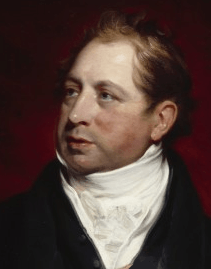Henry Thomson (painter) facts for kids
Henry Thomson (born July 31, 1773 – died April 5, 1843) was a talented English artist. He was a member of the Royal Academy, a famous art institution. He even became the Keeper of the Royal Academy, which was a very important role.
Henry Thomson mainly painted pictures about history, old stories (mythology), and books. He was also good at translating texts from one language to another.
Life of Henry Thomson
Henry Thomson was born in Portsea, Portsmouth. His father was a naval purser (someone who managed supplies on a ship). His father really supported Henry's interest in art. In 1787, they even traveled to Paris together.
They had to return to England two years later because of the French Revolution. From 1791 to 1792, Henry studied art at the Royal Academy Schools. He then continued his training with another artist named John Opie.
After this, Henry traveled around Europe again with his father. They were in Italy from 1793 to 1798. Then they visited Austria and Germany in 1799.
When he came back to England later that year, Henry Thomson's art career grew quickly. In 1800, he showed paintings of classical subjects at the Royal Academy exhibition. The next year, he became an associate member of the Academy. By 1804, he was a full Academician.
Even though he was known for historical paintings, Henry also made money by illustrating books. This was common for artists back then. He became well-known in 1801–1802 for his work on Boydell's Shakespeare Gallery. He showed many paintings of myths, everyday life, and also portraits until 1825.
In 1825, Henry Thomson was chosen to be the Keeper of the Royal Academy. He took over from Henry Fuseli. However, after only two years, he had to leave the job. He was very ill and could not continue. William Hilton took his place as Keeper.
Henry never fully recovered from his illness. He did not take on any more big art projects. He moved back to Portsea and passed away there on April 6, 1843. He was buried in the churchyard of the Portsmouth parish church.
Henry Thomson's Artworks
The first painting Henry Thomson showed at the Royal Academy was called Daedalus fastening wings on his son Icarus. He was known for "historical and fancy subjects." Between 1800 and 1825, he showed a total of seventy-six paintings at the Academy. Most of these were portraits of people.
Some of Thomson's important works include Mercy interceding for a fallen Warrior (1804) and Love Sheltered (1806). He also painted The Red Cross Knight (1806) and Love's Ingratitude (1808). Other notable paintings are The Distressed Family (1809) and Titania (1810). He also created Peasants in a Storm (1811) and The Infancy of Jupiter (1812).
His painting Juliet (1825) was the last work he showed at the Academy. Many of his paintings were also made into prints, like Love Sheltered and The Red Cross Knight. He also illustrated books, such as Sharpe's Poets.
Henry Thomson as a Translator
Henry Thomson also translated a book from French into English. The book was called The Destination of Works of Art and the Use to which they are Applied. It was written by Antoine-Chrysostome Quatremère de Quincy and published in London in 1821.
In Literature
The writer Letitia Elizabeth Landon was inspired by Henry Thomson's art. She wrote a poem about his painting Juliet after the Masquerade. This poem was included in her book Poetical Sketches of Modern Pictures in 1825. She wrote another poem about the same painting in 1828.




